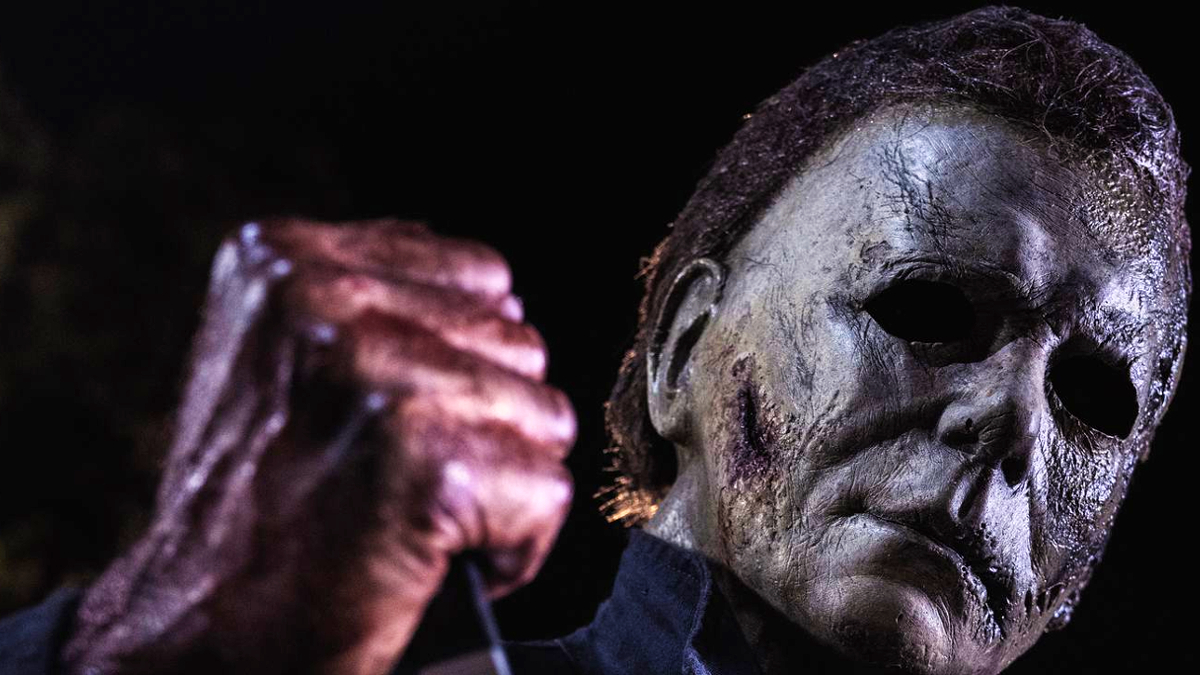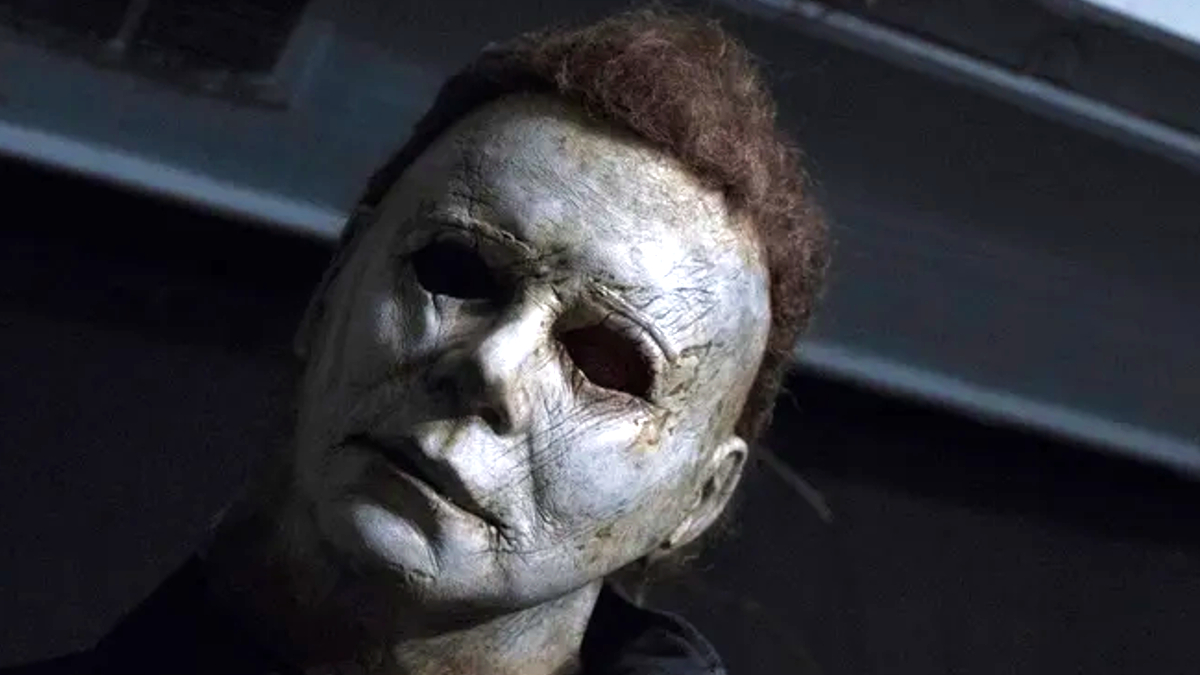For decades, the horror/slasher genre has shared plenty of common tropes, be it the final girl on whom the title of “scream queen” has been conferred, spooky fictional small towns haunted by unknown and unexplained actions of a serial killer, gory deaths, and, most importantly, masked murderers whose obscure identity have successfully augmented the films’ mysterious tone.
While Scream has done an exemplary job in unveiling and unearthing the murky secrets behind the ongoing chaos in town, the genre’s biggest and most popular franchise, Halloween, is still secretive about its primary antagonist Michael Myers. This has been accomplished in two ways: it has kept Myers’ incessant killing spree persona a mystery to date and using a pale white mask to complement it.
John Carpenter’s 1978 Halloween has seen a plethora of sequels for nearly 40 years, and some of them bear little affinity to the original. However, the haunting presence of Michael and the uncertain fate of Haddonfield’s youngsters and babysitters remain the premise on which the new plotlines and twists are built.
As the perennial question of why Michael kills continues to be raised, his mask has drawn quite a lot of attention from the franchise’s fans. Several theories have been formulated regarding the same, a few of them responding to the question of the reason to wear the mask in the first place. Amidst the speculations, one of the theories that can be elaborated on concerns the masks’ powers and abilities to activate his dormant killing mode. Let’s shine some light on this possibility.
What does Michael Myers’ mask represent?

It is an undeniable truth that Michael’s identity is synonymous with the iconic white mask that he wears when he is on his usual rampage and murder mission. Very rarely did a character manage to open the mask. Even then the audience barely got a glimpse of his face.
An understanding of what the mask represents is often tied to the question of the reason for wearing the mask, which is still unclear despite numerous theories and explanations that have revolved around it. If the references to evil are considered, then the theory that can be considered is the mask is meant to conceal the evil that lurks behind it.
In the original movie, Michael is repeatedly referred to as evil by Dr. Loomis who said, “I spent eight years trying to reach him, and then another seven trying to keep him locked up because I realized that what was living behind that boy’s eyes was purely and simply evil.” Thus, Michael’s mask becomes a representation of evil itself.
Other theories suggest that he wears a mask while killing to actually hide his true identity so that he can carry on with the act without getting recognized. However, the question that could be asked is, would the audience’s perception of Michael have been similar without his mask? The mask, in addition to hiding his true identity, blends with his constructed persona of a killer with a blank expression and stone-cold demeanor who demands to be feared by the residents of Haddonfield as well as the viewers.
Along with Michael, the mask becomes an entity in its own right and an essence of who Michael is. It also delves into how he has been perceived both by his victims and the audience alike—a murderer without empathy who cannot be reasoned or rationalized with. Following the release of Carpenter’s Halloween, the subsequent sequels attempted to provide answers to the reasons for his actions, one of them being that the “Cult of Thorn” placed their curse on him resulting in him killing his family. However, the act of killing takes place with the mask on, proving how integral it is to Michael’s primary purpose of existence—killing people.
Do Michael’s powers come from the mask?

Given the deep connection that Michael has with his mask, significant speculations can be made regarding the power that it holds in driving him to commit gruesome murders. Although the movies have not particularly focused or even hinted at the mask’s powers, quite a few hints can be extracted from the sequels that signal the theory.
For one thing, very rarely has his mask been removed in the movies. In one of the most iconic scenes of the ’78 Halloween, Laurie Strode (Jamie Lee Curtis) tried to fight off Michael and in the process opened his mask only to find a man lacking emotion or expression standing next to her. The next time we see Michael without the mask is in Halloween 5: The Revenge of Michael Myers when it is lifted off in one scene as he was about to kill his niece, Jamie.
The recent sequels have devoted quite a decent amount of screen time to a maskless Michael. In the 2018 Halloween’s introduction, the killer is shown maskless inside Smith’s Grove Psychiatric Hospital. There he was institutionalized for nearly 40 years when one of the two podcasters, Aaron Korey, flashed the mask in front of him for testing his senses and emotions.
On Oct. 30, he massacred a bus full of people including a child while he was being transferred to a different facility. As the scene evokes the spine-chilling killings of the original movie, the subsequent murders also have the viewers wondering what propelled this sudden change of attitude.
For four decades, his murderous instincts were dormant while he was in the hospital. Then all of a sudden, the killing urges are ignited reinstating his status as a merciless serial killer with no empathy. One of the reasons that explain the outburst is his proximity to the mask. Aaron, before revealing the mask, said, “I would like to stand closer to him, if I may, to get a sense of his awareness or lack of awareness,” to which the psychiatrist Sartain replied, “Make no mistake, he is aware.”
There is a possibility that Michael was aware of the mask being held closer to him that transported him back to his killing days. In Halloween Kills, there are two scenes suggesting his powerlessness when his mask is being tampered with. The struggle between Lindsey and Michael, where the latter bashed her head to near-death, paused when she nearly opened his mask. He stopped to rearrange his mask and then go on hunting her, proving that his killing instincts are probably derived from it. Later, Karen also used it to lure him into a trap of the town’s raging mob who later bludgeoned him to his unconscious state.
Interestingly, a killer like Michael possessing the strength and lifespan of an immortal, stood still when his mask was off and allowed him to be beaten. That’s pretty odd for a serial killer who till then was dabbling in head smashings and eye gouging. While one of the explanations points to the disclosing of identity being the reason for the killing to have stopped, it resumed immediately after he laid his hands on the mask.
One of the possible explanations is that by using it, Michael gets the power to kill. If not in a supernatural manner—even though this may also be a viable theory given his superhuman strength and resilience—but a psychological push to commit evil actions. If the interpretation of the mask being a representation of evil is considered, then the very possession of the item enables him to manifest his evil persona. If that is the case, killing or weakening one of the most unkillable villains on screen might not be so tough after all.

